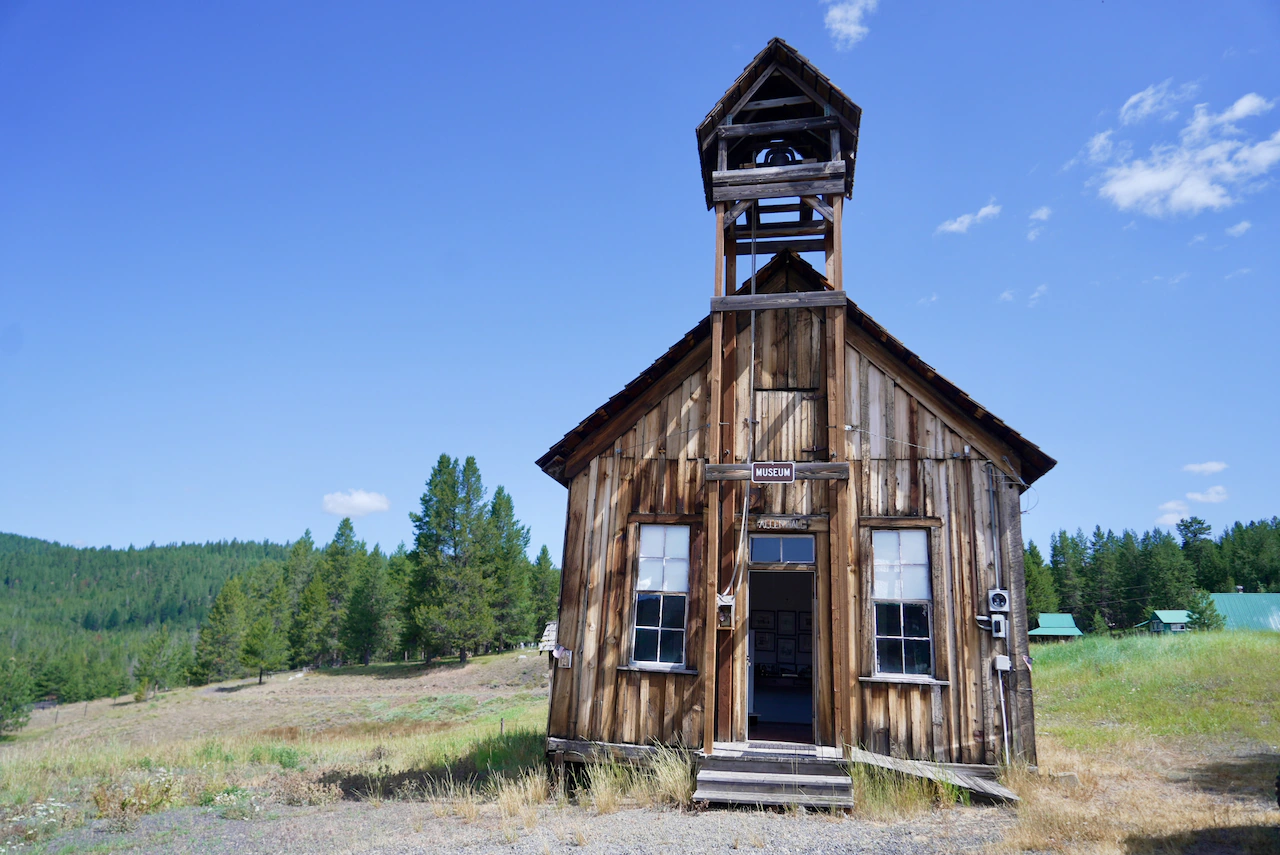Oregon’s fourth smallest city was the site of a famous murder committed by a mother and daughter

This is part 2 of a series visiting the five smallest cities in Oregon.
The city of Granite, population 32, has no website, no phone number and no offices. The town’s only businesses — a lodge and a gas station/cafe — both shut down in the past few years.
But as the rustic wooden sign says at the entrance to town, “Don’t take us for Granite.” Oregon’s fourth smallest city has a colorful past and residents eager to talk about it.
Granite is about a 60-mile drive west of Baker City in Grant County, high in the Elkhorn Mountains. The town consists of about 10 blocks and one paved road.
As I drove into town, I spotted a woman walking down the street and introduced myself. She told me her name was Eva McKinney and invited me to hop on the back of her ATV for a tour of the city.
“This used to be a really bustling gold town,” she said as she drove. “I mean, bustling. This used to be an actual grocery store. This building was a drug store. There’s a brothel down here, and many mines.”
The community of Granite began on July 4, 1862, when miners struck gold along Granite Creek. Soon a settlement was created, with about 450 people living in the area as of the 1870 census.
The majority of those residents — 365 people, according to the census — were Chinese. About two miles north of today’s town, the Ah Hee Diggings Interpretative Site marks the place where those Chinese miners lived and worked. The site includes interpretive panels along a pullout on the Elkhorn Drive Scenic Byway.
Initially, settlers called the community Independence, in honor of the date gold was found. But when they applied for a post office in 1878, they discovered the name was already taken elsewhere in Oregon. They opted for Granite instead.
After the passage of the Chinese Exclusion Act in 1882, the Chinese population plummeted, with 13 Chinese residents counted in the 1900 census, and none in the following decades.
The city was incorporated in 1900, with a population at the time of 245 people inside the city limits, and another 600 people just beyond. There were two hotels, a grocery, several saloons and a newspaper (the Granite Gem).
Amazingly, many of these original buildings still stand across Granite today.
During World War II, the government shut down gold mines because it wanted miners to focus on “essential” metals for the war effort. That shift pretty much killed the tiny town of Granite. In the 1960s, the population shrunk to a single resident.
Today, the city has about 70 homeowners, but the majority of them visit only during the summer, meaning Granite isn’t counted as their residence by the census.
The primary modes of entertainment are hunting, fishing at nearby Olive Lake, ATV trail riding and rockhounding.
“It’s a beautiful place,” said Eva’s husband, Kyle McKinney, who serves on the Granite City Council. “I love it. Nice and quiet. A lot of people come up here on the holidays to get away from the bustle of busy life. It’s a place for recreation. Four-wheel out of here. Fishing’s not too far away. It’s relaxing.”
The McKinneys moved to Granite after retiring from their jobs in La Grande, about 60 miles away. Their family loved Granite so much, that eventually four of the McKinney siblings purchased cabins in town. Kyle’s sister, Shawna Romito, spends her summers there.
“It’s a piece of heaven, I love it,” she said. “I love the four-wheeling. I love the people. I love the creeks.”
Romito had recently gotten the keys to the former city hall, which has no electricity or plumbing but holds a collection of city history. Romito plans to open it herself as a museum three times a year: on Labor Day, Memorial Day and Fourth of July weekend.
Luckily, I caught her on July 5.
“This is the first time it’s been open to the public in the six years since I’ve been here,” she said as she unlocked the door.
Most of the exhibits inside the one-room museum are about Granite’s biggest claim to fame: a scandalous murder.
Edward “Bud” Morrow was Granite’s mayor and lone lawman (as a reserve sheriff’s deputy) when he was gunned down inside his A-frame cabin on March 6, 1982.
At the time, Granite didn’t have telephone service. The town’s only connection with the outside world was Morrow’s police radio.
A mother and daughter who lived across the street were convicted of the crime. Nora Hollemon, 39 at the time of the murder, went to prison first. Her mother, Adeline Hollemon, then 65, was sent to the Oregon State Hospital and deemed unfit to stand trial. In 1986, Adeline fled as a fugitive after walking out during a day pass from the state hospital. She was arrested months later in Alaska, convicted of murder that same year, and sent to prison.
The women were known to have an ongoing feud with Morrow, but over what exactly remains a mystery. The Hollemons, according to news reports at the time, were generally hostile to their neighbors and had been reprimanded by Morrow for “threatening residents and visitors to Granite.”
Today’s Granite residents are much more welcoming. The museum carries pamphlets for a walking tour of 13 historic buildings through town.
And while there are no businesses for travelers to visit, that could change. The now-shuttered Outpost store and gas station, along with a little cabin on the property, is listed for sale for $579,000. Perhaps the new owner will be the city’s 33rd resident.
Granite, Oregon
2020 census population: 32
Size: 0.4 square miles
City budget: $32,500
Interesting fact: Mail comes three days a week. Cell phone reception is spotty across the city, but there’s a free public Wi-Fi shed on South Stevens Street where lost travelers can get a signal.



